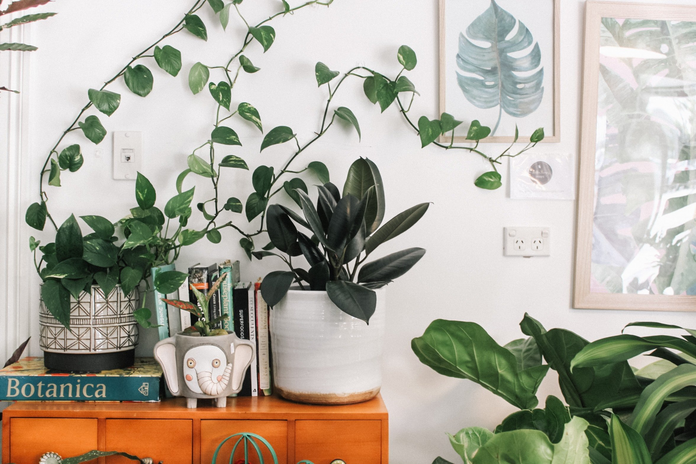If you’re like me, you either tend to overwater your succulents with love, forget you have to actually water plants entirely, or may not even know what kind of plant parent you are. Not everyone has a green thumb, but knowing the basics about the care and keeping of plants you own will help you keep them alive for more than two weeks. The following are just a few of the many plants you can start out by purchasing as a first-time plant parent or a plant parent that doesn’t have a green thumb.
- Preparation
-
You can’t just buy plants without being properly prepared. The good news is that being prepared to become a plant parent is relatively simple. You won’t need much to start your journey, but one of the first things you will need is a small watering can and/or a spray bottle. The watering can could be anything—an actual miniature sized one that can easily fit in your room or an old water bottle you don’t use anymore. The spray bottle will need to be filled with water for plants that don’t need to be watered that much. Next, you will need some pots to put your plants in or on. Some plants already come in small terracotta pots, and others may not, depending on the size and type of plants you’re buying. Lastly, you will need one extra container or plate for each pot. Terracotta pots come with a hole at its base that allows excess water to flow out after watering the plant, and you can paint them if you want to get creative! These containers can be anything from a jewelry dish to a lunchbox container you won’t miss from your kitchen.
- Low Light Plants
-
If your dorm room doesn’t always provide enough direct sunlight, these are the plants for you. They prefer to live in areas of either indirect sunlight or shady areas.
Herringbone plant: This plant does better in shady, indirect sunlight. Water it around once a week, but the dirt must be damp at all times. It should be misted on a daily basis.
Rattlesnake plant: This plant will do well in a shady spot with indirect sunlight. It likes being in humid environments, so ensure that the soil is always damp and the leaves are always misted.
Earthstar plant: This plant loves shady areas and should not be kept in sunlight whatsoever, as its leaves can be easily burned. To water it, place it in a container of water for a few minutes once every week, and every other week in the winter to allow the roots to soak up water. Mist it on a regular basis.
- Low Water Plants
-
If you don’t have time to water your plants on a set schedule between classes and work, these plants are your calling. You can mist them if needed as you pass them by, but don’t need to water them as frequently as other plants.
Ivy: Only water this plant once a week as long as its soil has dried from the last watering. You’ll be able to water it once every one to two weeks in the winter. It must be kept in a brighter area of the room to help it grow.
Rubber plant: These plants should be watered once a week, but in the winter only water every two weeks, and make sure the dirt has a chance to dry out. Mist the leaves occasionally. This plant loves bright but indirect sunlight.
Cactus: The succulent sized plant is easy to care for. Once a week, it should be allowed to soak in a container of water for a few minutes. It appreciates light, but make sure not to keep it in direct sunlight constantly.
- Pet-Friendly Plants
-
These plants will not be harmful to the pets running around your apartment!
Boston Ferns: This plant is neither toxic to cats nor most dogs. It should be placed in indirect sunlight, and the soil must be consistently damp. The plant itself should be misted on a regular basis.
Ponytail Palm: This plant will not be poisonous for your pets. It does well in bright sunlight, and its soil should have dried between waterings. This will typically be once a week, or one to two weeks during wintertime.
Bamboo plant: This plant is also non-toxic to both cats and dogs. It prefers to sit in brighter areas of the room but has no problem living in lower light conditions if needed. Make sure to mist this plant on a regular basis, and make sure the soil is frequently damp. This means watering it once a week normally, then once every two to three weeks in the winter.
Choosing a plant that coincides with your lifestyle, whether you’re a busy person, live in an apartment with low-light or have pets, will help you to achieve your plant growth goals.



